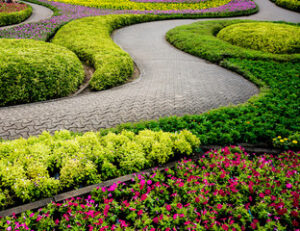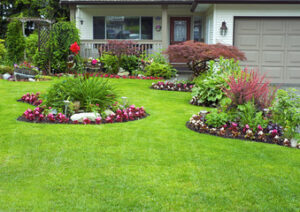Duluth Truck Accident Attorney have in-depth knowledge of federal regulations that govern the trucking industry. They can use this knowledge to investigate potential violations that may have contributed to the crash.
During the investigation, they will gather evidence from the scene, interview witnesses, comb through trucking company documentation and records, and take other steps to help build your case. They can also quantify your losses and seek compensation for current and future expenses.

A truck accident lawyer is a legal professional with the specialized education, training and experience needed to handle legal cases related to crashes involving commercial trucks. These lawyers can help victims recover compensation for their injuries and other losses. They can also provide compassion and guidance as they help clients navigate the often complex legal process.
Specialized truck accidents attorneys are well versed in federal and state trucking regulations, as well as how they apply to specific cases. They know how to identify and use violations of these laws as evidence that a truck driver or company is at fault for a crash.
When a crash occurs, it is essential to collect as much evidence as possible. This can include photos of the scene, eyewitness statements, cell phone records, and dash cam footage. A experienced truck accident attorney knows how to protect and preserve this evidence so that it is not destroyed or lost. They also understand the timelines for when this evidence must be gathered.
Trucking companies are required to keep extensive records of their vehicles and drivers, which can be crucial to proving negligence in the event of a crash. These records can reveal information such as how long a driver has been driving without a break, whether they were drug-tested or not, and how fast they were driving. Experienced truck accident attorneys can access and analyze this evidence to determine if it is sufficient to prove liability.
Accidents involving large trucks often result in serious personal injuries and significant damage to property. This can lead to expensive medical bills, loss of income, and a toll on victims’ mental health. Experienced truck accident attorneys can help victims get full and fair compensation for their losses by negotiating with insurance companies and other parties involved in the crash.
When negotiating, truck accident lawyers consider future costs like ongoing treatment, lost wages, and pain and suffering. They work with life care planners and other experts to ensure they are obtaining accurate estimates of victims’ future needs. This allows them to fight for maximum compensation in settlement negotiations. If a settlement cannot be reached, they are prepared to take the case all the way to court.
Knowledge of Trucking Regulations
In the trucking industry, there is a complex set of rules that both drivers and companies must adhere to. These regulations are enforced by a variety of agencies, including the Department of Transportation (DOT) and Federal Motor Carrier Safety Administration (FMCSA). Regulatory compliance is crucial because it allows for a safe and efficient transportation system while also minimizing accidents and liability.
Regulatory laws are constantly changing, requiring both trucking companies and their drivers to stay abreast of the latest updates. This is especially important when it comes to electronic logging devices, which are now required for most commercial trucks. These new devices are meant to ensure that drivers follow Hours of Service regulations, thereby reducing the risk of fatigue-related accidents.
It’s also important to keep up with DOT accident reporting guidelines. When trucking companies and their drivers are in compliance with these standards, they can avoid fines and a tarnished reputation. Moreover, violations may even lead to out-of-service orders for both the driver and the vehicle, which can severely impact their income and productivity.
A knowledgeable NYC truck accident attorney can help victims navigate the complexities of these regulations and protect their rights after a crash. This includes gathering and preserving evidence, interviewing witnesses while their memories are fresh, and meeting important legal deadlines. In addition, a good lawyer will have a network of experts and other resources that can strengthen the case.
Another aspect of a skilled truck accident attorney is their ability to identify and establish liability. This may include determining the owner of the truck, whether it’s an independent trucker or part of a larger company. It’s also possible that a manufacturer or maintenance company could be liable for the crash.
Trucking accidents can be extremely complicated, involving multiple parties and often resulting in serious injuries. Therefore, it’s critical to hire an experienced New York truck accident attorney as soon as possible. This will allow them to preserve crucial evidence, collect witness statements while they are still fresh, and build a strong case for compensation. They can also assist with filing insurance claims and other necessary paperwork.
Negotiation Skills
In a truck accident case, you need an attorney who is adept at negotiating with insurers to secure fair settlements for your injuries and losses. Negotiation involves communication, persuasion, and strategy. A skilled lawyer is well-versed in these techniques and has the ability to craft a persuasive argument, remain calm under pressure, and negotiate from a position of strength.
A truck accident case is complex, requiring a thorough investigation of all relevant facts and evidence. An experienced truck accident attorney knows how to gather and analyze the necessary documentation, including photographs, videos, accident scene notes, witness statements, and expert testimony. In addition, they possess a keen understanding of state and federal regulations that apply to the trucking industry, such as hours-of-service requirements, driver qualifications, vehicle maintenance standards, and cargo loading standards. A good truck accident lawyer can identify any violations that may have contributed to the crash and use this information to strengthen your case.
Insurance companies are known to employ a variety of tactics in order to reduce their liability and payouts, including delaying the claims process, disputing the severity of your injuries, or even outright denying valid claims. A good truck accident attorney is skilled in navigating these negotiations and will protect your rights by pursuing adequate compensation for your medical expenses, lost wages, property damage, pain and suffering, and future anticipated damages.
A good truck accident attorney will not hesitate to take your case to court if necessary. Their willingness to litigate will send a strong message that they are not afraid of going head-to-head with the insurance company and are ready to fight for you in front of a judge and jury. This will also help level the playing field in the negotiations and ensure that you do not receive an insufficient settlement offer. In addition, the attorney will have the resources to hire expert witnesses who can further strengthen your claim. In many cases, these experts include accident reconstruction specialists, medical professionals, and economists. In addition, they will have a wide network of professional relationships that they can leverage to strengthen your case.
Litigation Skills
Often, truck accidents lead to severe injuries, resulting in significant medical expenses, lost income and other damages. A qualified attorney can help clients pursue fair compensation for these losses, allowing them to recover and rebuild their lives.
Depending on the type of crash, multiple parties may be held liable for the resulting damage. A specialized lawyer is well-equipped to investigate the accident and identify all potential sources of liability. They can also work with medical and financial experts to establish a full valuation of the victim’s damages, increasing the likelihood of obtaining a fair settlement.
In the event that a settlement cannot be reached through negotiations, a skilled truck accident attorney should be prepared to take the case to trial. Litigation skills are vital in this context, as the complexities of truck accidents can make it challenging to present a clear and compelling argument to a judge or jury. A competent truck accident lawyer will be able to navigate the legal process efficiently and effectively, avoiding unnecessary delays and ensuring that all relevant laws are taken into account.
Successfully litigating a truck accident case requires extensive resources and knowledge of complex regulations. A seasoned lawyer will have established networks of experts who can offer valuable insights into the causes of the accident and its long-term impact on the victim’s life. They will also be able to effectively communicate with these experts, prioritizing their clients’ needs throughout the legal process.
In addition, a skilled truck accident attorney will be able to effectively negotiate with insurance companies and protect their client’s rights against attempts to minimize payouts. They will be able to handle all communication with the insurance company, ensure that all necessary documents are provided and counter any tactics used to undermine the claim. This is particularly important, as many truck accidents result in substantial damages that can affect a person’s quality of life and financial stability for years to come.








